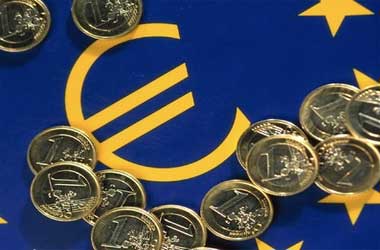 The GBP/AUD pair has begun its uptrend and the scenario could remain bullish in the days and weeks ahead as the comparative central bank policy outlook calls for Sterling’s better performance against the Aussie.
The GBP/AUD pair has begun its uptrend and the scenario could remain bullish in the days and weeks ahead as the comparative central bank policy outlook calls for Sterling’s better performance against the Aussie.
The pound rallied against several major currencies Tuesday as the Aussie underperformed. Notably, the rally has come against the backdrop of strengthening of the US dollar along with an anticipated rise in the US government bond yields. The price chart indicates that the GBP/AUD pair has considerable support near 1.7850.
In case, the support level holds, traders can anticipate a level of 1.81, provided the underperformance by the Australian dollar limits the AUD/USD from crossing the level of 0.78.
And there are considerable reasons to believe that the Aussie’s underperformance against the greenback will continue in the near term. Robert Rennie, chief of financial market strategy at Westpac, pointed out that the pair continued to trade in a narrow range of 0.7741 to 0.7755 after the release of the RBA policy statement, indicating a lack of momentum in favor of the Aussie.
The RBA (Reserve Bank of Australia) has issued lackluster upgrades to its economic view and also left the benchmark interest rate unaltered at 0.10%. Other criterion of its monetary policy programs were left unchanged, although its views with respect to the currency were clear.
The RBA once again stated that the trade-weighted Aussie is trading at the higher end of its boundaries in recent years. However, the central bank refrained from reiterating its earlier statement that the bank’s initiatives were paving way for a “lower exchange rate than otherwise.”
With respect to the Aussie, the RBA’s statement has been interpreted by Westpac and others as suggesting that the price of commodities and Aussie exchange rate is not the subject of focus for the monetary policy currently.
Hence, the reverse has a high likelihood. The RBA had virtually no other option other than removing the aforesaid statement from its policy statement, in spite of expressing worries over the level of trade-weighted Aussie as it seems to have the effect of intervention in the market.
The RBA might well have deliberately promulgated a falsehood had it reiterated the assertion saying its cash rate and quantitative easing plan were essential for maintaining the Australian Dollar on a lead, a strategy it couldn’t do for understandable reasons, so it’s exclusion from the policy statement does not mean a green signal for Aussie Dollar bulls.
Elias Haddad, a senior FX strategist at Commonwealth Bank of Australia, pointing to the RBA’s policy decision, stated “The RBA highlighted that the decision on yield curve control and future bond purchases will be announced at the 6 July Board meeting.”
CBA’s Haddad opined that The positive global economic growth view, along with Australia’s favorable balance of payments situation and underpriced exchange rate, indicate that the AUD/USD has space to rise towards 0.8200. However, the AUD/USD uptrend will be bumpy due to variations in monetary policy decisions between the Fed and the RBA.
As a matter of fact, the Aussie is a commodity currency with a high beta correlation to an expected worldwide economic rebound, and as analysts have frequently said, certain raw materials rates have dropped by 50%, exacerbating what was still a notable perceived “undervaluation” of the Aussie.”
As an outcome, a handful of commercial bank financial models predict that this “market value” is on the north of the elusive 0.80 mark in the AUD/USD, despite the fact that allowing the Aussie to bridge the difference by rising to such thresholds would put the RBA’s inflation target in jeopardy.
The overwhelming majority of central banks are more worried with delivering desired levels of inflation, instead of “fair value” for asset prices, and it just so happens that rising exchange rates subsidize imports and may therefore weigh on the consumer price index.
The RBA and other cenral banks have slashed interest rates below zero, while giving unparalleled amounts of monetary stimulus to economies in the hopes of bringing inflation back to targeted levels in the coming months, although the RBA, at the very least, is clearly not going to relax and watch the speculative section of the FX sector stomp throughout its goals.
The UK economy has had very little difficulties on delivering the necessary inflationary pressures in recent years than most others, and it is generally acknowledged as a frontrunner to lead the developed nations in recovery this year due to a vaccination-induced jump start in reopening.
In the meantime, pricing in interest rate futures markets this week indicates that investors continue to trust that the RBA and many more central banks would raise benchmark rates before the Bank of England.
This scenario is very positive for the GBP/AUD pair, but much of Sterling’s future is also dependent on the result of the Bank of England policy proposal on Thursday.
Governor Andrew Bailey and his associates will present their overall observation on the UK economy’s present state and growth prospects, even as investors will be quite interested in information about the inflation outlook and the probable timeline of any inevitable plan to raise benchmark rates.
This is amusing, but it also means that Sterling and GBP/AUD have room to rally in the upcoming days if any of the Bank of England’s Thursday comments encourage investors to challenge those conclusions.




